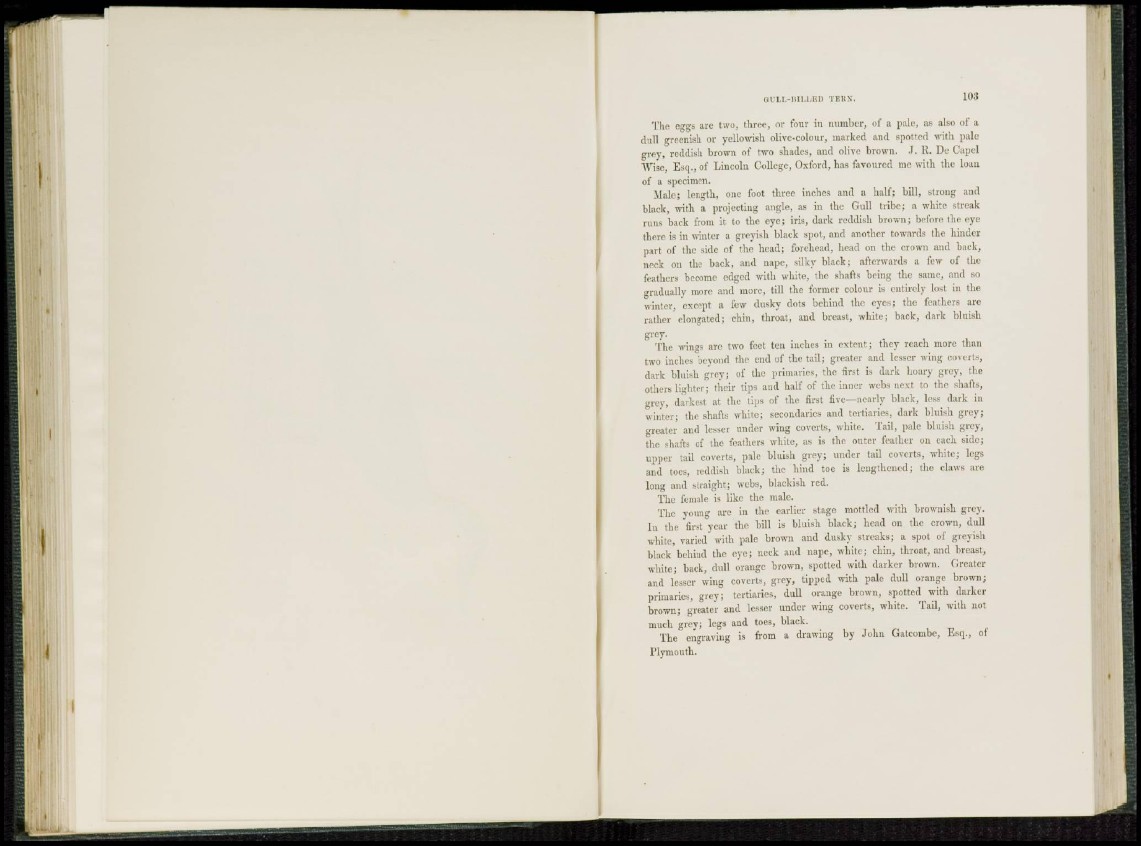
GULL-BILLED TERN. 103
The eggs are two, three, or four in number, of a pale, as also of a
dull greenish or yellowish olive-colour, marked and spotted with pale
grey, reddish brown of two shades, and olive brown. J. R, De Capel
Wise, Esq., of Lincoln College, Oxford, has favoured me with the loan
of a specimen.
Male; length, one foot three inches and a half; bill, strong and
black, with a projecting angle, as in the Gull tribe; a white streak
runs back from it to the eye; iris, dark reddish brown; before the eye
there is in winter a greyish black spot, and another towards the hinder
part of the side of the head; forehead, head on the crown and back,
neck on the back, and nape, silky black; afterwards a few of the
feathers become edged with white, the shafts being the same, and so
gradually more and more, till the former colour is entirely lost in the
winter, except a lew dusky dots behind the eyes; the feathers are
rather elongated; chin, throat, and breast, white; back, dark bluish
grey.
The wings are two feet ten inches in extent; they reach more than
two inches beyond the end of the tail; greater and lesser wing coverts,
dark bluish grey; of the primaries, the first is dark hoary grey, the
others lighter; their tips and half of the inner webs next to the shafts,
grey, darkest at the tips of the first five—nearly black, less dark in
winter; the shafts white; secondaries and tertiaries, dark bluish grey;
greater and lesser under wing coverts, white. Tail, pale bluish grey,
the shafts of the feathers white, as is the outer feather on each side;
upper tail coverts, pale bluish grey; under tail coverts, white; legs
and toes, reddish black; the hind toe is lengthened; the claws are
long and straight; webs, blackish red.
The female is like the male.
The young arc in the earlier stage mottled with brownish grey.
In the first year the bill is bluish black; head on the crown, dull
white, varied with pale brown and dusky streaks; a spot of greyish
black behind the eye; neck and n a j i e , white; chin, throat, and breast,
white; back, dull orange brown, spotted with darker brown. Greater
and lesser wing coverts, grey, tipped with pale dull orange brown;
primaries, grey; tertiaries, dull orange brown, spotted with darker
brown; greater and lesser under wing coverts, white. Tail, with not
much grey; legs and toes, black.
The engraving is from a drawing by John Gatcombe, Esq., of
Plymouth.